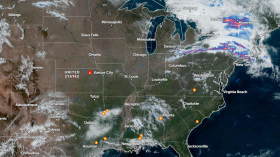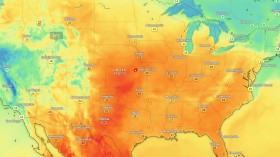Since wind turbines have been found to kill roughly 100 golden eagles a year in some locations, a solution for the two coexisting needed to be found -- and researchers at University of Waterloo in Canada were able to do just that. Their study maps potential wind-power sites and eagles' nesting patterns, and suggests that there are locations where wind power would be abundant and less threatening to eagles.
"We can't endanger animals and their habitats in making renewable energy projects happen," Brad Fedy, a professor in the Faculty of Environment at the University of Waterloo, said in a statement. "Our work shows that it's possible to guide development of sustainable energy projects, while having the least impact on wildlife populations."
Professor Fedy and Jason Tack, a Ph.D. student at Colorado State University, took nesting data from different areas throughout Wyoming to create models using certain environmental variables, and referenced them against areas with potential for wind development. Their research was recently published in PlOS ONE.
While they are no longer considered endangered, golden eagles are protected in the United States by the Bald and Golden Eagle Protection Act. With this new data from the University of Waterloo, future modeling techniques can be used when planning sustainable energy projects, in order to continue conservation efforts for this species.
According to the release, 75 to 110 Golden eagles are estimated to die at a wind-power generation operation in Altamont, California each year. This represents about one eagle for every eight megawatts of energy produced.
"Golden eagles aren't the only species affected by these energy projects, but they grab people's imaginations," Professor Fedy said in the release. "We hope that our research better informs collaboration between the renewable energy industry and land management agencies."
For more great nature science stories and general news, please visit our sister site, Headlines and Global News (HNGN).
© 2024 NatureWorldNews.com All rights reserved. Do not reproduce without permission.

![Severe Thunderstorm Alert: Tornadoes, Damaging Winds and Hail Possible from Upper Ohio Valley to Northeast US [NWS]](https://1471793142.rsc.cdn77.org/data/thumbs/full/70161/280/157/50/40/severe-thunderstorm-alert-tornadoes-damaging-winds-and-hail-possible-from-upper-ohio-valley-to-northeast-us-nws.jpg)



